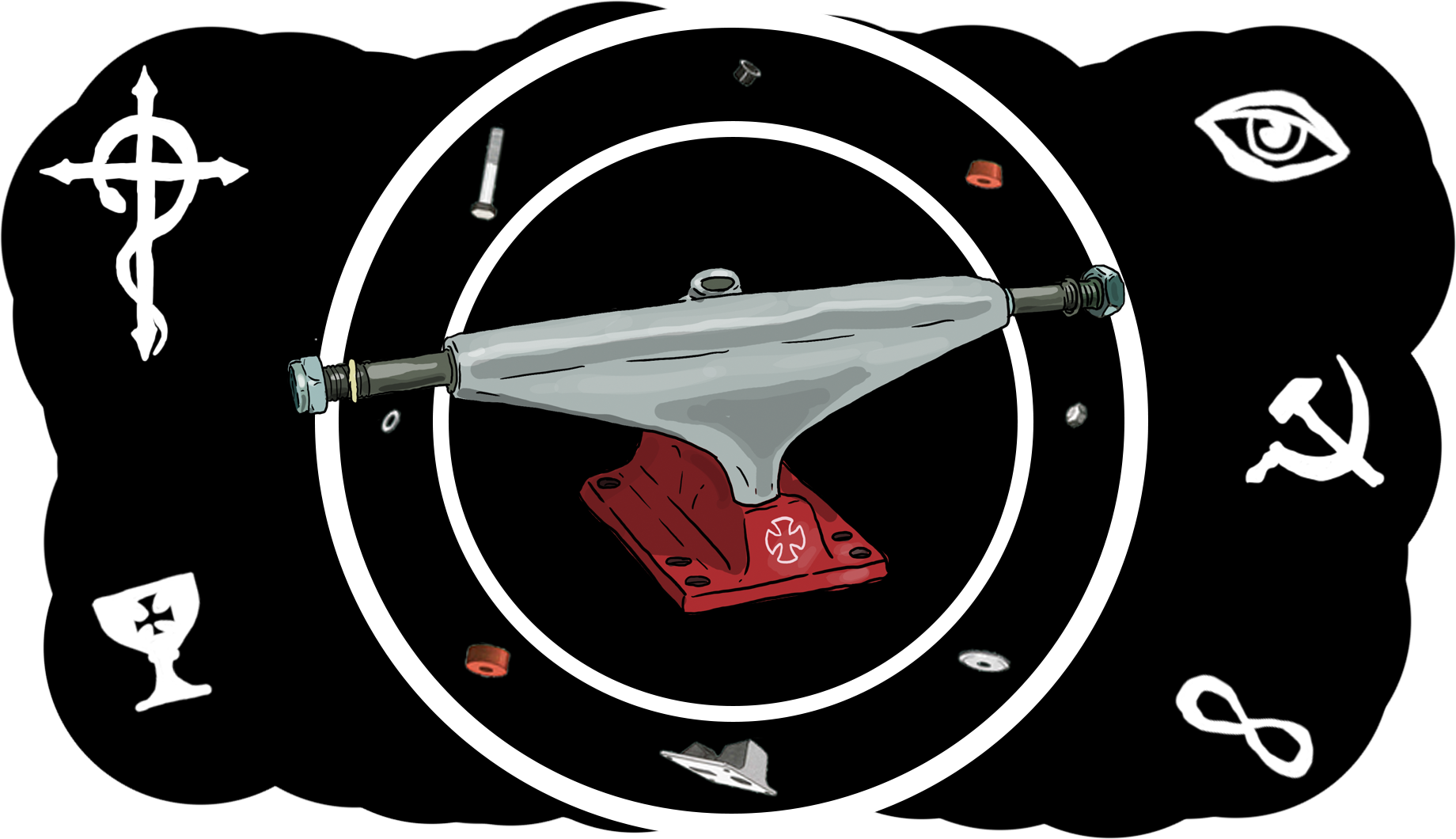
Skateboarding attracts fanatics. Only those willing to slam stay in the game. And within skating’s self-selecting society, many dedicated sub-factions have emerged over the years.
Some worship at the temple of the curb. Others are loyal only to certain brands, which occasionally act as sects unto themselves. But even among those with faithful followings, no company boasts more devoted maniacs than Independent Trucks, which has seen devotees grinding down to the axle and getting the brand’s cross logo tattooed on their bodies for almost 40 years.
Though your average skater is happy to ride Independent’s most current product, some diehards are committed to older, rarer trucks. Yup, among the Indy faithful there’s a smaller, even-more-hardcore cult devoted to riding old-school trucks from the ’80s and ’90s. Their obsession has created a long-running underground market for vintage Independents. Scouring garage sales and eBay, some of them are willing to pay more than $200 for the right kind of ancient aluminum.
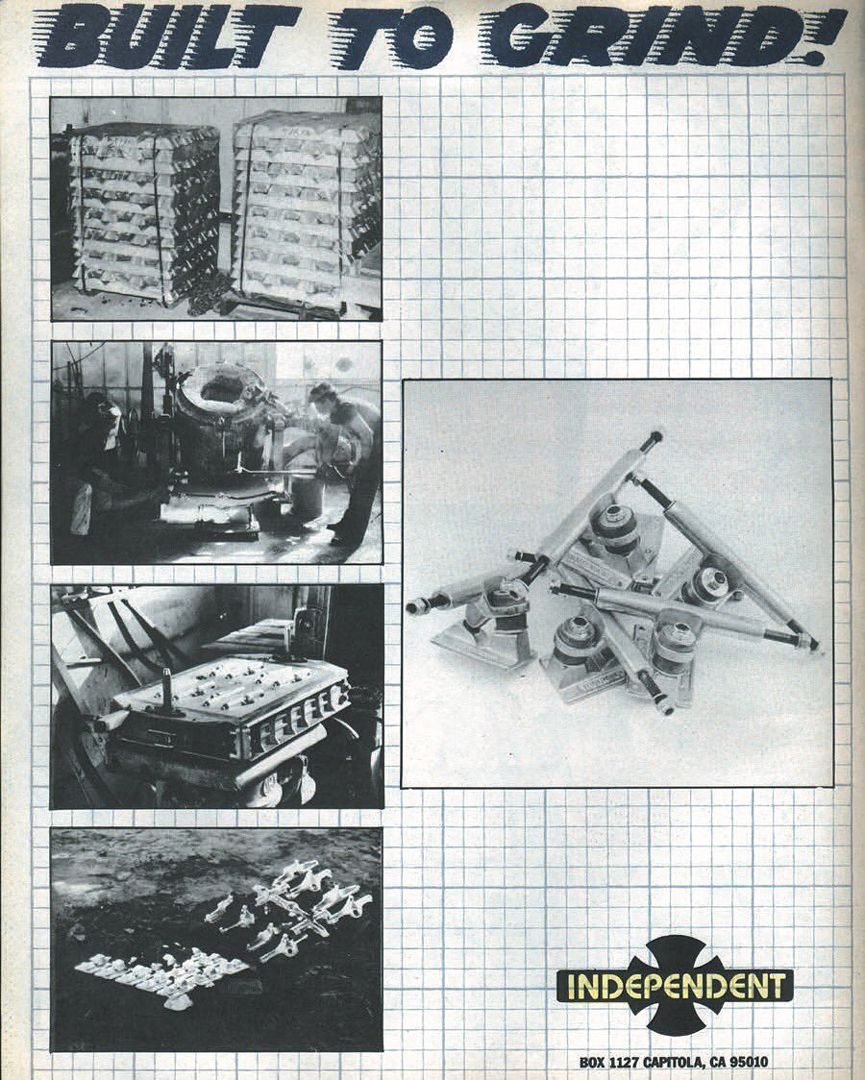
Of course, as any skate nerd knows, the cult’s knowledge isn’t all that mysterious if one digs a little deeper.
Indy assigns each of its new trucks a numbered “stage,” denoted with Roman numerals, probably because that’s simply the most punk way to label something.
The first Indys came out in 1978, designed as a combination of what brand manager Keith Wilson describes as “the two things from the best trucks: the turn of the Bennett and the modern durability and adjustability of the Tracker.” Those first trucks are Independent Stage Is.
Stage II came next in 1979, and so on. Each new stage has featured minor upgrades, shaving off aluminum for weight, “pinching” the baseplate for durability, or adding support “wings” to the hangers, which swoop down distinctively towards the pivot creating lightweight strength.
It’s not just aging bowl riders who obsess over such minutiae either. Your favorite street skaters aren’t immune to vintage Independent madness, we learned. “We have some team riders that swear by certain stages,” Wilson explained. “Geoff Rowley rides Stage VIIs. Gilbert [Crockett] rides Stage VIIIs. So there are some team riders that skate those.”
When asked, Rowley confirmed Wilson’s words. “I’ve ridden Stage VII Indys exclusively since 2005,” he said. But when pushed to reveal why he’s a longtime member of the old-school Indy cult, the Englishman wouldn’t say. Luckily, Swedish artist, Insta skate favorite, and JK Industries rider Ludvig Håkansson was more forthcoming. “The turn is more responsive,” he explained, offering at least some insight into the mind of an old-school Indy rider. Still, that info didn’t exactly settle anything. Maybe the magic is in the technical specs of each stage.
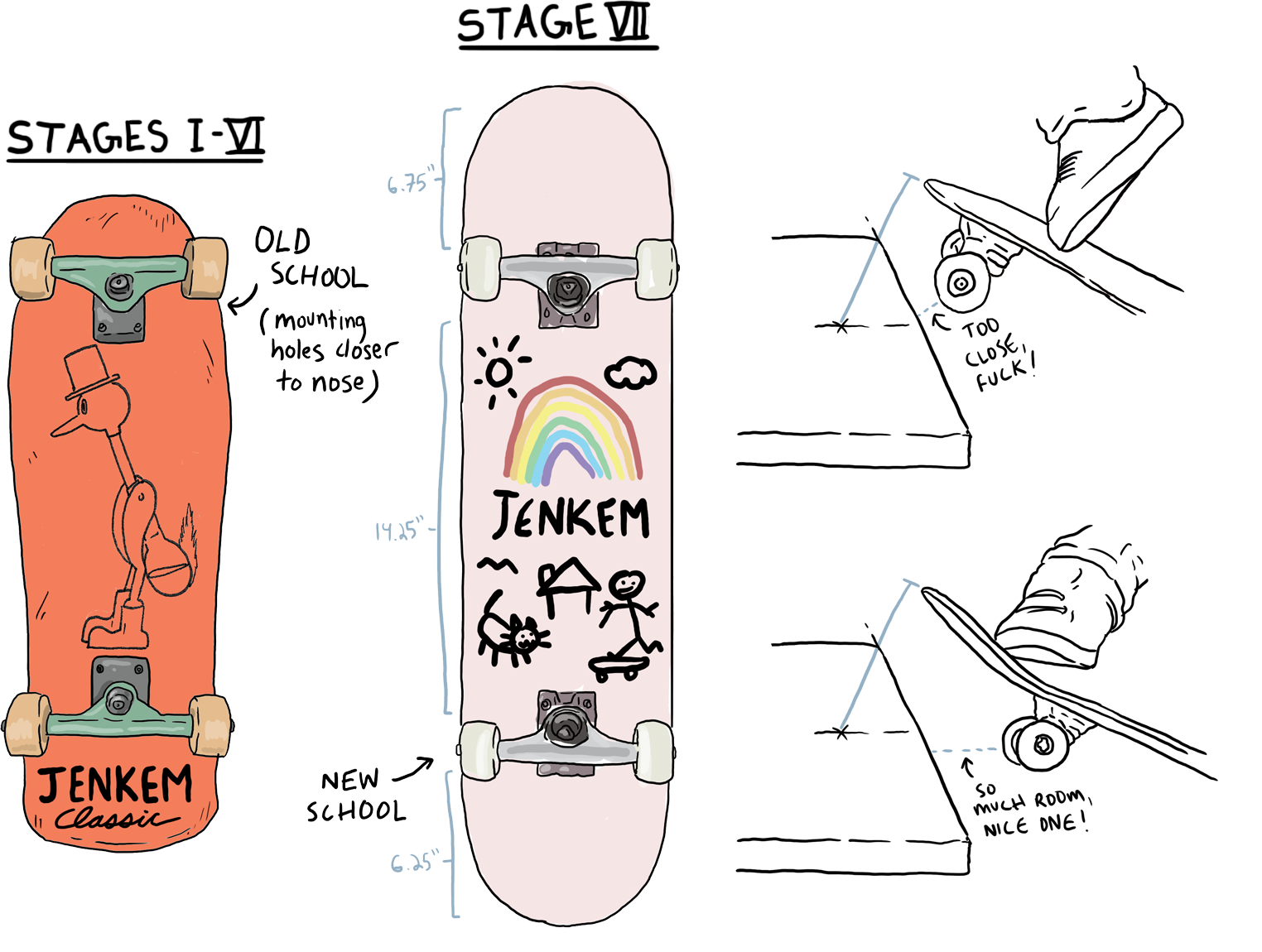
Though Independent has produced 11 different stages now, there have only been a couple of big changes to Independent geometry over the years. According to Wilson, advancements in street skating spurred the first big change in 1993. Before that, the mounting holes on boards were closer to the nose, putting very little baseplate metal between the bolts and, say, a curb.
As nose- and tailslides became standard, skaters would literally shave their bolts off on the rough concrete. Indy’s stage VII trucks offered a solution. With a thicker, sturdier pivot housing and redesigned mounting holes that were set back on the baseplate, closer to the center of the board, Independent Stage VIIs kept bolts safely out of the way of curbs and ledges.
Board companies and other truck-makers soon adopted the new mounting hole pattern, and it remains standard to this day. Despite these two changes, Wilson maintained that “from V to VII… the geometry is essentially the same.”
And Håkansson actually agreed, explaining that he didn’t think the Stage VII upgrades affected Independent’s signature turn much at all. “I’m actually skating Stage VII right now, the first stage with a modern bolt pattern,” he told us. “They are quite similar to [the older] Stage V.”
Clearly, 1993’s Stage VII turn pretty much like previous models, offering scant explanation for why so many riders are obsessed with old school Indy designs. And if this first big geometry upgrade doesn’t explain the cult of old Independent riders, it stands to reason that some other tweak must be responsible.
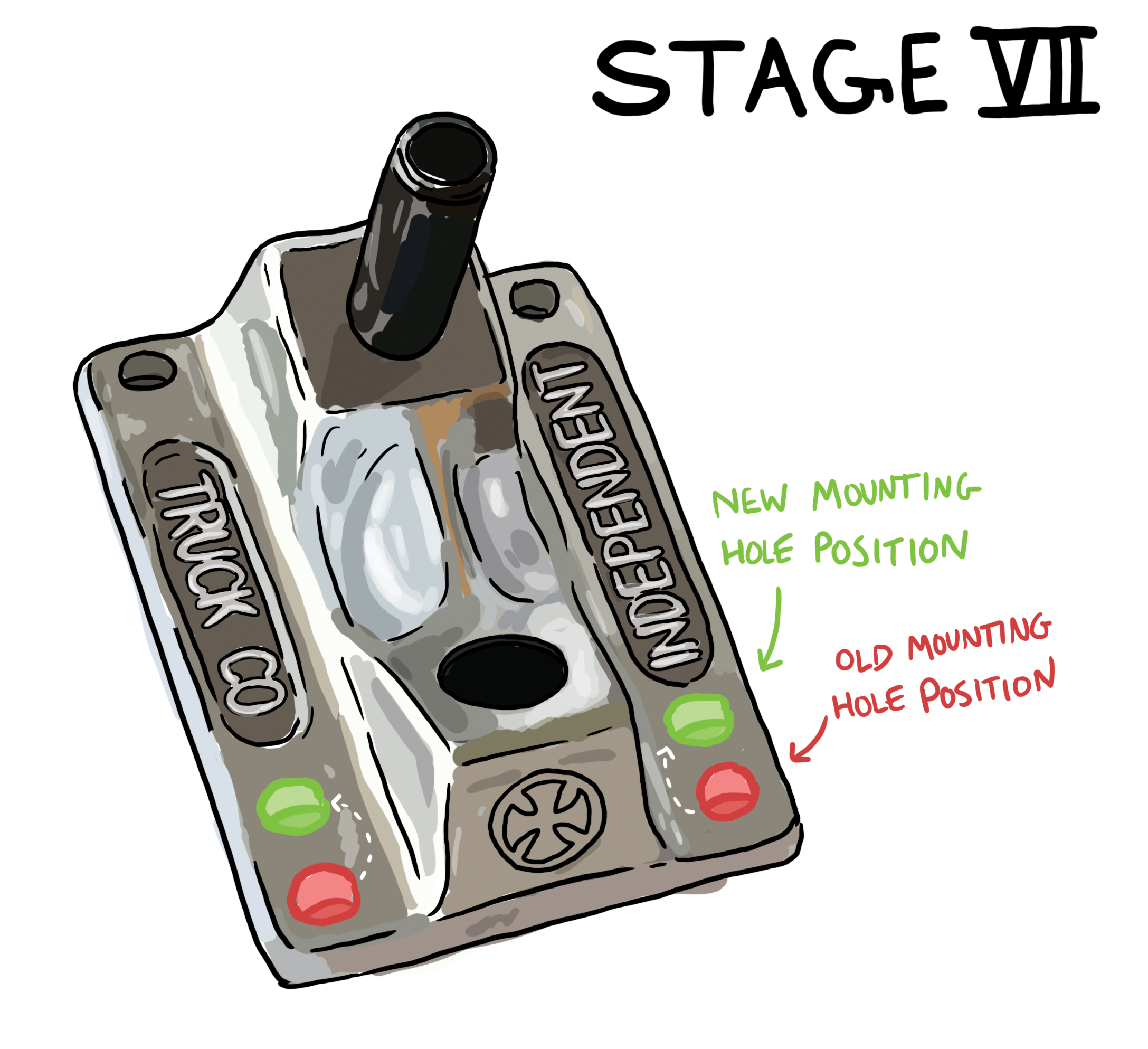
That other tweak is likely the next alteration Indy made to its geometry in 2003, with Stage IX.
According to Wilson, Stage IX, “was the first stage that was computer drafted.” That sounds cool, but working with untested technology had unintended consequences for Independent. “They didn’t tell us that they were really redoing the geometry at all. But my gut feeling is that they just didn’t model it right,” Wilson said. “The truck ended up quite a bit lower.”
The Stage IX modifications dropped standard Indys from 55mm to 53.5mm, totally altering the turn. It didn’t help that the baseplates sucked too. “They fucked up on the baseplate pretty bad and put two holes in it,” Wilson recalled. “Those things broke.” Though Independent returned to a beefed-up baseplate for Stage X, the lower geometry remained and the trucks just didn’t turn like old Indys, making many riders to look to past models to get the perfect turn.
Throughout it all, Independent was aware that a small sect of riders had abandoned its contemporary trucks and were only fucking with older models. “Of course we know about the cult following of those trucks,” Wilson said. “I mean, I love it. If you think about it, old stuff is cool and those trucks have a certain allure to them.”
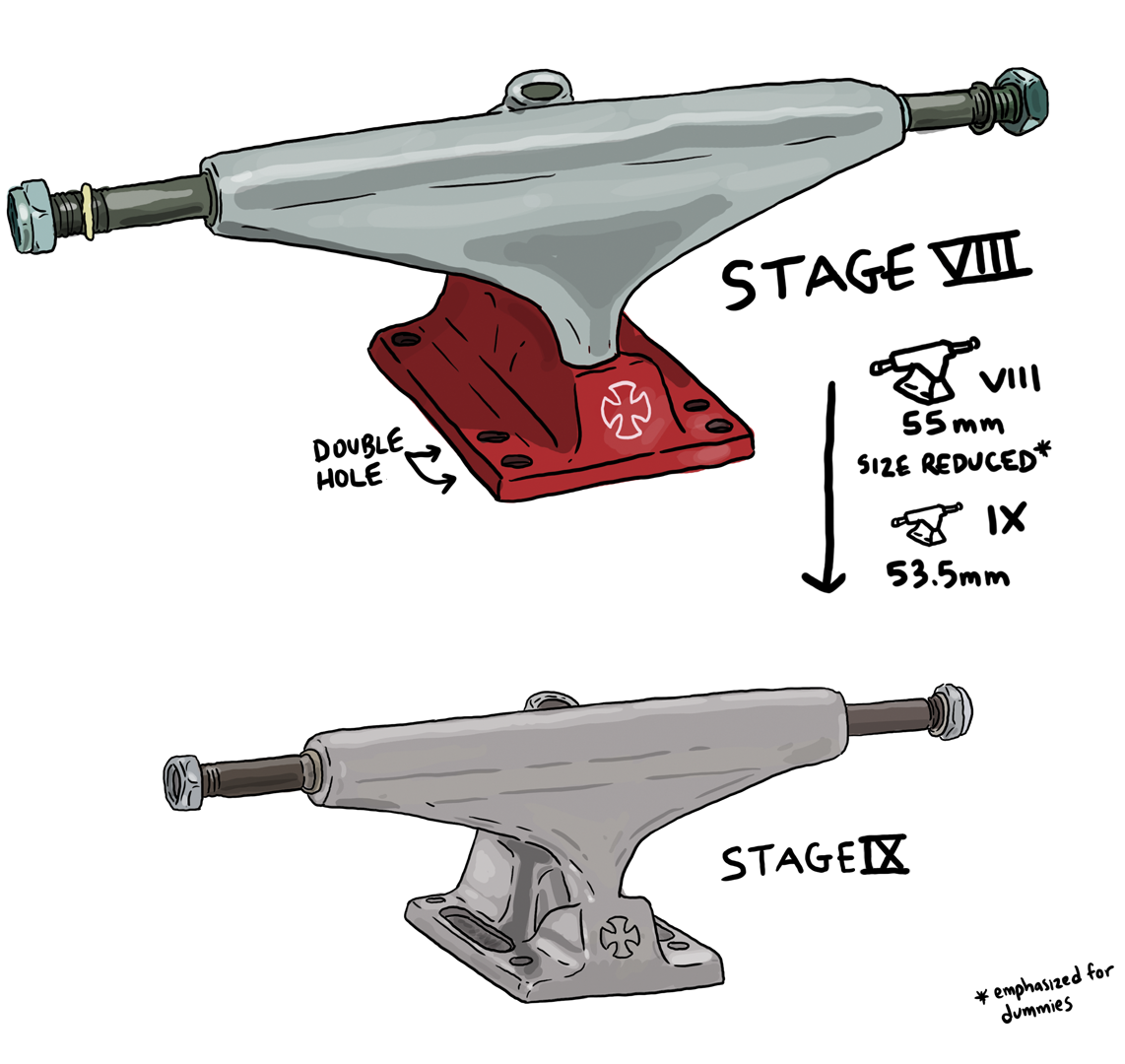
And it’s that awareness that just might explain the changes Independent made to its latest model, the Stage XI, which came out in 2013. No sane brand would ever keep competing with its own back catalog, right? Though Wilson didn’t explicitly say that the cult of old Indy riders impacted recent design tweaks, he did confirm that older models definitely influenced his decisions concerning Stage XI.
“I wanted to get it back as close as possible to the Stage V to VII geometry,” he told us. Accomplishing that required some retro-inspired redesigns, including a return to the classic 55mm height and pivot and kingpin angles inspired by Stage V.
Technical aspects and cultists aside, Wilson said that Stage XI was really about catering to all of Independent’s longtime fans, while honoring the brand’s legacy. “It was after [Independent founders] Fausto and Eric died,” he said. “I felt like this was my opportunity to get it back to where your traditional Indy dude wants it to be.”
“No sane brand would ever keep competing with its own back catalog, right?”
And though Wilson acknowledged that with every new truck, “there’s got to be some sort of evolution there. Skaters want that,” he also noted that Indy still, “mostly sells our standard silver, solid-axle, solid-kingpin, gravity-cast stuff.”
So if Indy’s cult followers can access the best parts of their beloved older designs in newer truck models like the Stage XI’s, might they be less concerned about stockpiles of 20-year-old hunks of metal? Maybe. But the collector’s sickness runs deep. Some will keep stacking old trucks, only now they won’t worry about where to find the right pair of trucks.
Related Posts
Comments
Popular
-
 A CHAT WITH LUDVIG HAKANSSON, THE OLDEST SOUL IN SKATEBOARDING
A CHAT WITH LUDVIG HAKANSSON, THE OLDEST SOUL IN SKATEBOARDING
The man loves to read Nietzche, skates in some expensive vintage gear, and paints in his own neoclassical-meets-abstract-expressionist style.
-
 HANGING OUT WITH ANDREW HUBERMAN, SKATEBOARDER TURNED NEUROSCIENTIST
HANGING OUT WITH ANDREW HUBERMAN, SKATEBOARDER TURNED NEUROSCIENTIST
Curious what it would be like to hang with this guy outside of a stuffy podcast studio? Us too.
-
 GROWING UP, MOVING OUT, AND BREAKING BOARDS
GROWING UP, MOVING OUT, AND BREAKING BOARDS
A personal essay recounting a love affair with something we're all too familiar with.
-
 INTRODUCING THE NEW JENKEM COLLECTION, JUST IN TIME FOR THE HOLIDAYS
INTRODUCING THE NEW JENKEM COLLECTION, JUST IN TIME FOR THE HOLIDAYS
Air fresheners, bumper stickers, a shirt with a gun on it and a bunch of other stuff.
-
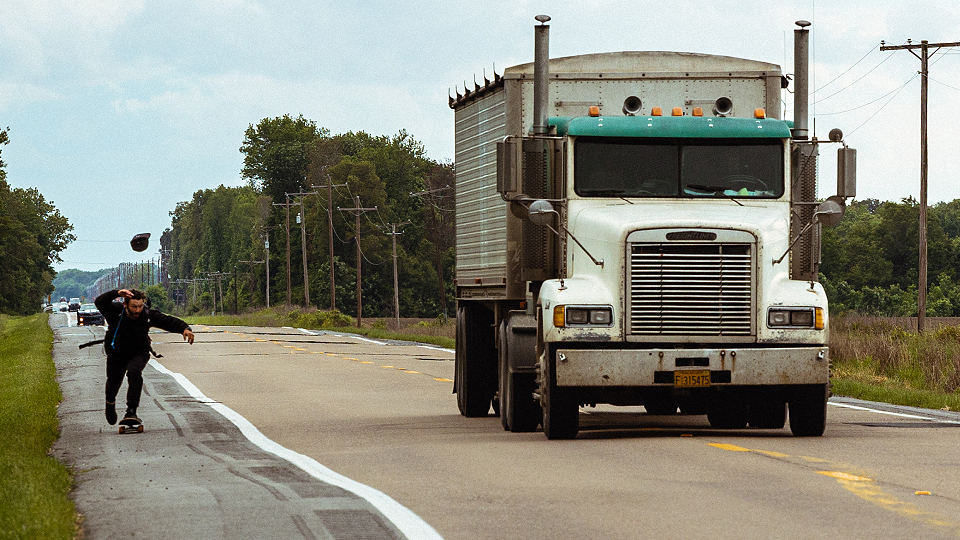 HOW CHAD CARUSO SKATED ACROSS AMERICA
HOW CHAD CARUSO SKATED ACROSS AMERICA
Chad did it the way most skateboarders would: independently and without much of a plan.

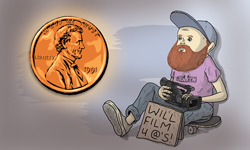
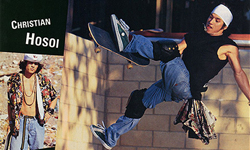

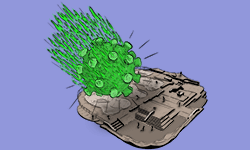
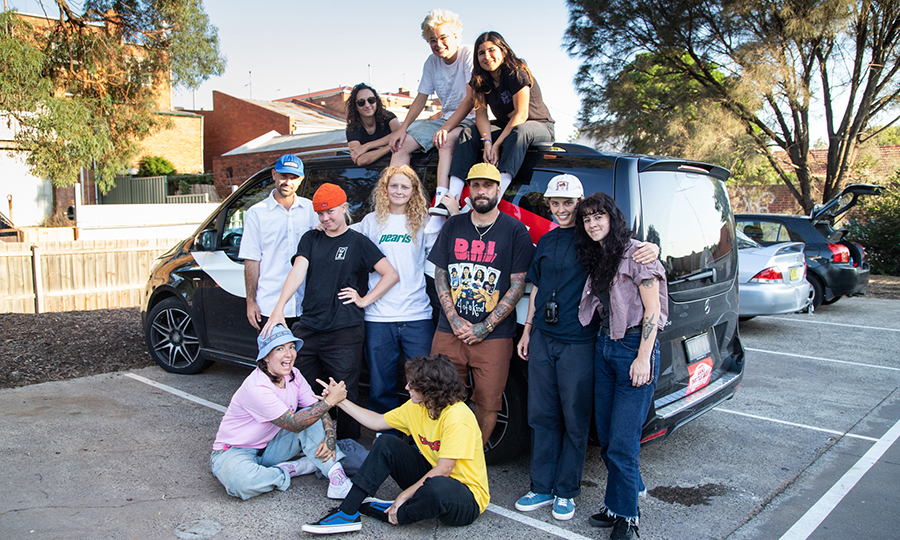
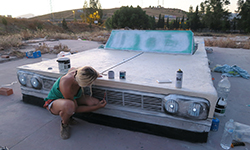
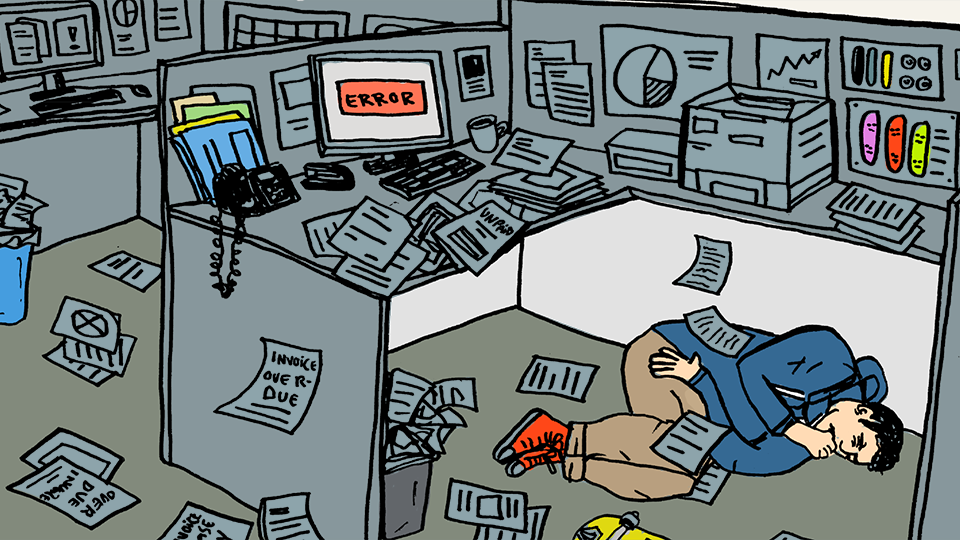
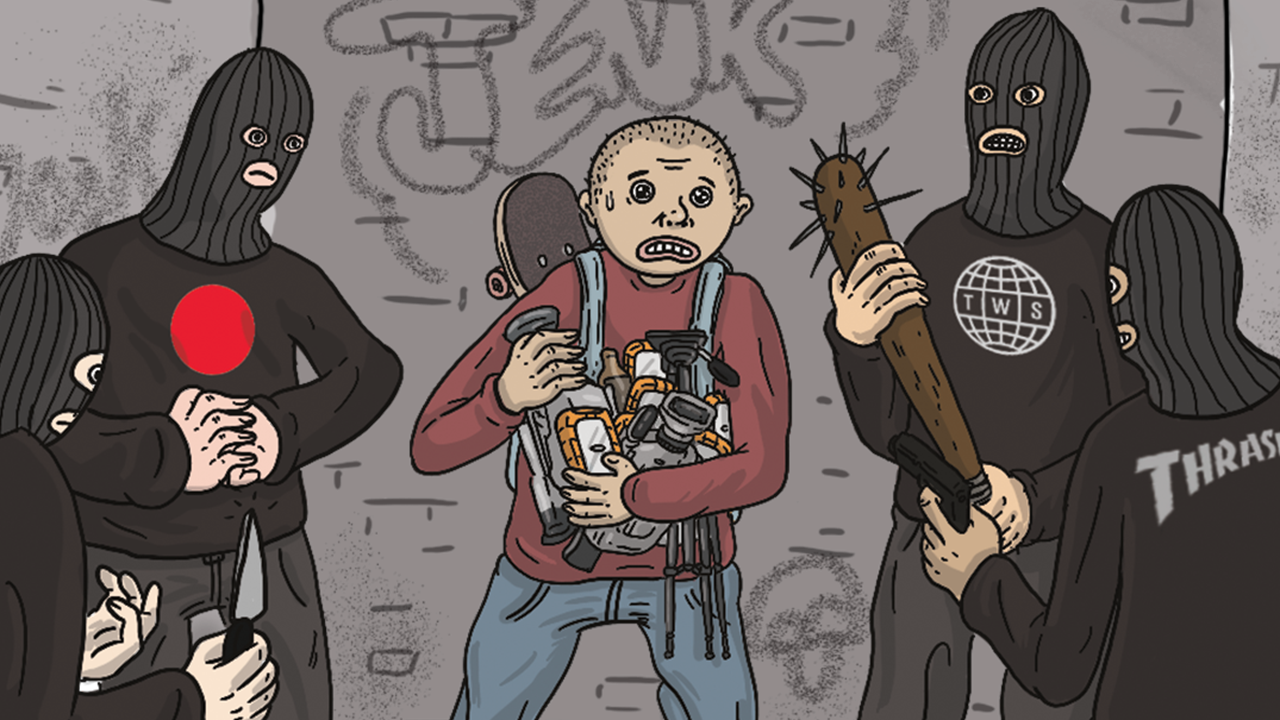
December 7, 2018 1:24 am
Very nice my first pair of Indy trucks were stage 2 and they were old in 87 88 most people had hangers with wings. I was kinda just skating whatever I could get tho being a poor kid but nothing turned like that truck. Then I was involved in technical street skating and I couldn’t screw around with axle slips
Wish this article got into axle bite (slip). This was the reason I got into other trucks like the the thunder t4. I would land primo and be taping my axle nut on the ground more than skating.
I tried the tracker Afro Street track and that was just a bad Indy bite.
Today I’m really into the ace truck it’s basically my first Indy but it’s great for everything. I skate the stage 11 indoors tho because they’re more stable and formula 4 wheels are very slick indoors
I’m never going to stop being skating almost 30 yrs because I quit a few times
February 25, 2019 3:28 am
Kinda weird they went back to 55mm bc only the tranny dudes who have never flipped a board s day in their life like that height of truck…. I lovvvvved stage 9’s and 10’s at 53.5 and so did tons of ppl including lots of pros. Koston and tons of others left Indy when they stage 11 came out and started skating Thudners instead (I did this as well) I just don’t get why they can’t make a 53.5mm height and a 55mm height for all the old ass Bowl skater dudes. I know u canmake stage 11’s 53.5mm high by using the forged hollow baseplate but fuck that they feel so weird and off like that stage 10’s were aaaaaaamazing! Now that they make 144 (8.25 axle) I wud kill to skate some 144 stage 10’s! That will prolly never happen tho. Indy’s are doper either way and still rock em on my cruisers and have a cruiser with some stage 7’s on it too but damn for actual skating I wish I cud get my hands on some 149 stage 10’s!
October 8, 2023 12:30 am
flip tricks are for gays
March 30, 2019 1:52 am
I wish they’d run the stage 10 as a street model , like as a mid in their lineup. Stage 7 as their regular truck. Would be so good with modern casting and no axle slip.
Stage 11 are too fat looking, and just not as stable on center as the old stage 7/8 I grew up with.
It’s like they figured it out in 93, only improvement left was in the materials and manufacturing and we’ve reached that with hollow axles, forged bases and better casting. Bring back stage 7, it’s only problem, axle slip, would be gone.
May 22, 2019 9:48 pm
Another big reason we like the old trucks is they were completely…MADE IN USA!!!😎
July 23, 2019 11:04 am
I just found out yesterday they outsourced to China . Do you k ow when this happened? Thank you n advance.